A Snapshot of Autism Spectrum Disorder in Utah
‹View Table of Contents
Download and print this page [PDF – 194 KB, Print Only]
Findings from the Utah Autism and Developmental Disabilities Monitoring (UT-ADDM) program help understand more about the number of children with autism spectrum disorder (ASD), the characteristics of those children, and the age at which they are first evaluated and diagnosed.
![]() SITE TRACKING AREA
SITE TRACKING AREA
Or 2.5% of 8-year-old children were identified with ASD in a three-county area in UT-ADDM in 2020.
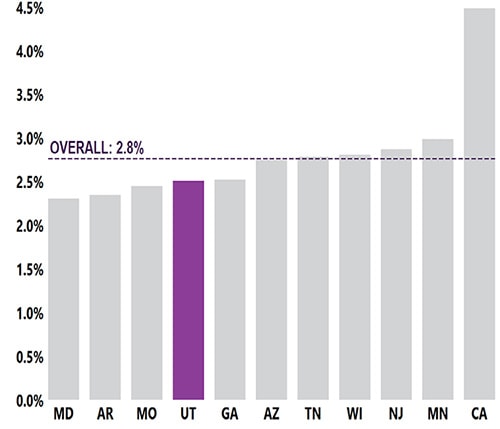
This percentage is similar to the average percentage identified with ASD (2.8%) in all communities in the United States where CDC tracked ASD among 8-year-olds in 2020.
or 1.3% of 4-year-old children were identified with ASD in a three-county area in Utah by UT-ADDM in 2020.
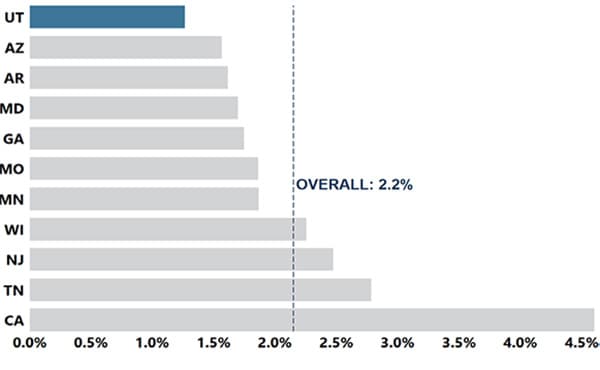
This percentage is lower to the overall average percent identified with ASD (2.2%) in all communities tracked by the CDC.
there was 1 child who was suspected but not confirmed to have ASD.

children living in lower-income neighborhoods had a higher rate of ASD identification compared to children living in higher-income neighborhoods.
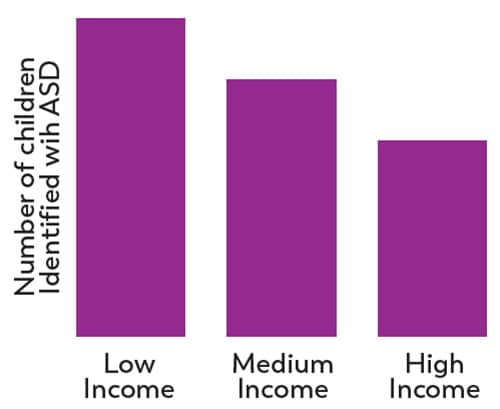
Children who were age 4 were 1.3 times as likely to receive an ASD diagnosis or ASD special education classification by 48 months of age compared to children who were aged 8.
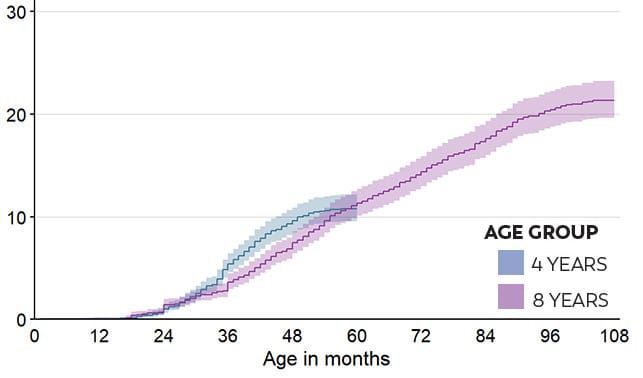
IQ data available for 51%
Of 8-year-old and 48% 4-year-old children identified with ASD by the UT-ADDM Project
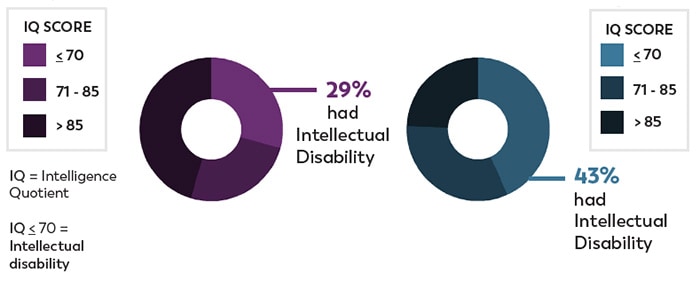
What are the key take-away messages in UT-ADDM?
- Utah’s estimated prevalence of ASD among 8-year-old children increased slightly since our last study from 2.2% in 2018 to 2.5% in 2020.
- Compared with 2018 when there was no difference, 4-year-old children in 2020 were more likely than 8-year-old children in 2020 to be identified with ASD by 48 months. This suggests that there have been improvements in Utah in identifying ASD at earlier ages.
- The prevalence of suspected ASD suggests that many 4-year-old children in Utah may have experienced challenges accessing assessments for ASD in 2020. This finding supports continued efforts in Utah to expand ASD diagnostic strategies to improve identification at earlier ages.
- ASD prevalence was higher among children from lower socioeconomic backgrounds. This shows improved access to diagnostic and treatment services across the socioeconomic spectrum.
How can this information be useful?
Utah-ADDM’s latest findings can be used to
- Promote new initiatives aimed at fostering earlier identification of ASD.
- Plan for ASD services and trainings.
- Guide future ASD research.
- Inform policies promoting improved outcomes in health care and education for individuals with ASD.
How and where was this information collected?
UT-ADDM uses a record review method. Specifically, this information is based on the analysis of data collected from health, early intervention, and special education records of 4-year-old and 8-year-old children living within a three-county area in Utah in 2020.
Tracking area
Salt Lake, Davis, and Tooele counties
8-year-old children in tracking area: 24,734
- 68% White
- 2% Black
- 21% Hispanic
- 4% Asian or Pacific Islander
- 1% American Indian or Alaska Native
- 4% Multiracial
4-year-old children in tracking area: 24,330
- 67% White
- 2% Black
- 22% Hispanic
- 5% Asian or Pacific Islander
- 1% American Indian or Alaska Native
- 4% Multiracial
*Estimates may not sum to 100% due to rounding.
What else does UT-ADDM do besides tracking ASD among 4- 8-year-olds?
UT-ADDM’s prevalence data are provided to our valued partners and used to support legislative initiatives aimed at increasing the services available to persons with ASD and their families. Data from UT-ADDM are also used to help understand community needs related to ASD to inform resource and service development. UT-ADDM is leading projects to improve our knowledge of early life risk factors for ASD, differences in characteristics among children with ASD, and disparities in ASD recognition across the ADDM Network. Finally, UT-ADDM is active in conducting education and outreach activities in the community to provide the latest information on the epidemiology of ASD.
“This year’s study shows how a wider range of families are accessing autism services, but more needs to be done so that children with autism receive a timely diagnosis to make the most of the treatment available.”
– CALLEEN KENNEY
Autism Council of Utah, Parent Consultant, Utah Family Voices, Family To Family Health Information Center at the Utah Parent Center
Resources
UTAH DEPARTMENT OF HEALTH AND HUMAN SERVICE’S BUREAU OF CHILDREN WITH SPECIAL HEALTH CARE NEEDS
Provides information about a range of services and resources
(801) 273-2800
https://health.utah.gov/cshcn/
BABY WATCH EARLY INTERVENTION
Services for children under the age of 3 years with developmental delays or disabilities
(800) 961-4226
https://health.utah.gov/cshcn/programs/babywatch.html
HELP ME GROW UTAH
Information referral helpline and free screening services
(801) 691-5322
https://www.helpmegrowutah.org
CDC’S LEARN THE SIGNS. ACT EARLY.
Janel Preston
Utah’s Act Early Ambassador
https://idrpp.usu.edu/act-early-utah/index
https://www.cdc.gov/ncbddd/actearly/
AUTISM COUNCIL OF UTAH
Information and advocacy for families
autismcouncilofutah@gmail.com
https://www.autismcouncilofutah.org
UTAH REGISTRY OF AUTISM AND DEVELOPMENTAL DISABILITIES (URADD)
Utah ADDM site and research center
(801) 587-8971
https://medicine.utah.edu/psychiatry/research/labs/uradd/
UTAH PARENT CENTER
Support for parents of children with special needs
1-800-468-1160
https://www.utahparentcenter.org
CONNECT WITH UT-ADDM
Amanda V. Bakian, PhD
Deborah Bilder, MD
UT-ADDM Principal Investigators
University of Utah
(801) 213-2881
amanda.bakian@hsc.utah.edu
deborah.bilder@hsc.utah.edu
Pages in this Report
- 2023 Community Report on Autism
- Executive Summary
- Key Findings from the ADDM Network
- A Deeper Dive
- Spotlight On: Progress in Early Identification Disrupted during the COVID-19 Pandemic
- Spotlight On: A New Pattern in Racial and Ethnic Differences
- Data for Action
- ADDM Network Site Snapshots Overview
- A Snapshot of Autism Spectrum Disorder in Arizona
- A Snapshot of Autism Spectrum Disorder in Arkansas
- A Snapshot of Autism Spectrum Disorder in California
- A Snapshot of Autism Spectrum Disorder in Georgia
- A Snapshot of Autism Spectrum Disorder in Maryland
- A Snapshot of Autism Spectrum Disorder in Minnesota
- A Snapshot of Autism Spectrum Disorder in Missouri
- A Snapshot of Autism Spectrum Disorder in New Jersey
- A Snapshot of Autism Spectrum Disorder in Tennessee
- ›A Snapshot of Autism Spectrum Disorder in Utah
- A Snapshot of Autism Spectrum Disorder in Wisconsin
- Glossary
- References